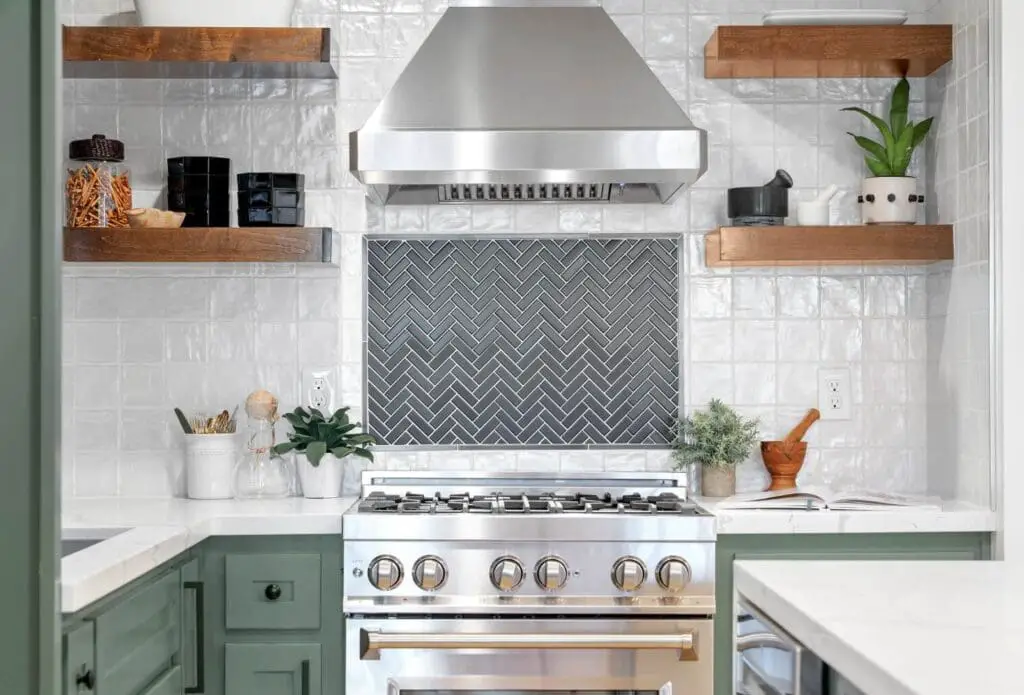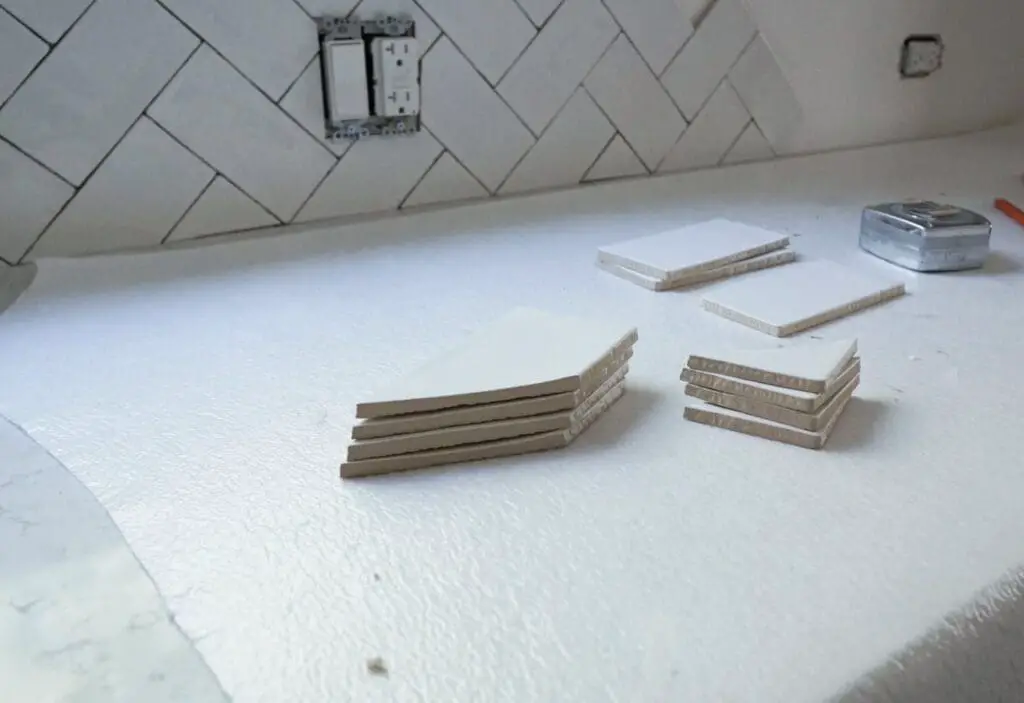Porcelain tile kitchen floors are popular, transforming homes and enriching the interior landscape with their durable, visually appealing, and easily maintained qualities. This is not just a passing trend but a growing preference – an expression of entrepreneurial astuteness and a keen business sense that values quality, innovation, and design.
With their cost-effectiveness and environmental considerations, porcelain tile kitchen floors are leading the way in setting the industry’s future benchmarks. Furthermore, as the digital world continues to reshape our lives, the discussions and examinations around the seismic shifts caused by online retail in this industry are of paramount significance.
Table of Contents
- The Rising Trend of Porcelain Tile Kitchen Floors
- Innovations and Designs In Porcelain Tile Kitchen Floors
- Cost-effectiveness of Porcelain Tile Kitchen Floors
- The Environmental Impact of Porcelain Tile Production
- Related Content
The Rising Trend of Porcelain Tile Kitchen Floors
One trend consistently resurfaces in the bustling marketplace of kitchen remodels and design trends – porcelain tile flooring.
For entrepreneurs with a finger on the pulse of the housing and interior design industry, capitalizing on this trend yields significant returns. Porcelain remains the business-savvy choice for kitchen flooring due to its durability, versatility, and return on investment.
Porcelain tiles are made by heating clay materials to extremely high temperatures. This process hardens the tile, resulting in a scratch-resistant product that is resistant to heavy impacts and durable enough to handle high-traffic areas like kitchens.
High durability equates to lower replacement and maintenance costs, which are always points of concern when considering business expenses and profitability.
Not only is porcelain durable, but it also offers unparalleled design versatility. Available in a range of colors, patterns, and finishes, porcelain has the unique ability to mimic other materials such as hardwood, cement, or marble.
This versatility allows consumers to achieve a desired aesthetic without compromising durability or cost. It allows entrepreneurs to cater to a wide range of consumer preferences.
As if these benefits weren’t enough, porcelain also offers a high return on investment. In the real estate industry, kitchen remodels often yield the highest return on investment when selling a property.
Buyers appreciate a well-designed kitchen equipped with durable materials such as porcelain. Consequently, homes with porcelain kitchen flooring frequently sell at higher prices. This appreciation creates an attractive opportunity for entrepreneurs looking to invest in properties, remodel them, and sell them for a profit.
Finally, let’s discuss the environmental impact of porcelain. The production process of porcelain tiles consumes less energy than other materials like cement.
Additionally, the long lifespan of porcelain flooring results in less waste generation in the long run. Thus, choosing porcelain as a flooring choice demonstrates corporate responsibility and dedication to environmental preservation, a quality increasingly sought by today’s consumers.
To summarize, the porcelain trend in kitchen flooring is a boon for business-savvy entrepreneurs. Its durability, versatility, high return on investment, and eco-friendly nature make it a wise choice to incorporate into your business strategy.
Keep a keen eye on this durable material, as it carves a niche in kitchen design and remodeling, and you’ll find plenty of opportunities for growth and profit.

Innovations and Designs In Porcelain Tile Kitchen Floors
Digital Evolution Paving the Way for the Porcelain Kitchen Tile Industry
In the fast-paced world of business innovation, the porcelain kitchen tile industry is no exception. Gone are the days of one-size-fits-all porcelain tiles. Instead, driven by ever-evolving consumer demands and innovative manufacturing processes, the porcelain tile landscape is transforming rapidly.
One of the driving forces behind this revolution is the injection of digital technology into traditional manufacturing processes. Advanced imaging techniques now enable businesses to offer porcelain tiles that mimic various materials such as hardwood, natural stone, and even fabric, thus broadening the design spectrum for consumers and making porcelain tiles a choice of elegance and style in kitchen remodels.
Another revolutionary stride is the advent of large-format porcelain tiles. These extensive pieces come in sizes up to 5ft by 10ft, making them ideal for creating visually seamless and minimal grout kitchens. When combined with the inherent durability of porcelain, these attributes further strengthen porcelain’s foothold as a reliable choice in kitchen flooring.
E-commerce platforms are also revolutionizing the porcelain tile industry. By bringing together manufacturers, suppliers, and consumers in a globally accessible marketplace, these platforms simplify the tile selection and purchase process, making it easier for consumers to find the right fit for their custom kitchen remodeling projects.
This digital marketplace trend is a testament to the power of ingenuity in meeting market demand, and budding entrepreneurs could look to it for considerable inspiration.
Lastly, the porcelain tile industry is gearing up towards sustainability and eco-friendliness. While porcelain is already a green product, made from natural clay and baked in a kiln, companies are taking it a step further by blending recycled materials into the mix without compromising the performance of the tiles.
This move satisfies the growing demand for sustainable products while also contributing to reducing global waste, giving porcelain tiles an edge in the eco-friendly marketplace.
In summary, the porcelain kitchen tile industry is at the forefront of combining technical innovation with aesthetic and durability requirements. To stand up to the competition and successfully appeal to consumers, it will take an entrepreneur who understands these trends and can harness them to deliver a product that meets the demands of the evolving market.
Therefore, whether it’s through advanced manufacturing technology, digital marketplaces, or eco-friendly considerations, the key to success in the porcelain tile industry lies in responding to these innovations creatively and effectively.
Ultimately, in any business venture, being adaptable and innovative is the way forward. Keeping pace with change, understanding the intended market, and delivering on customer expectations are the drivers for success and sound principles to remember in any industry, not just in the sophisticated world of porcelain kitchen tiles.

Cost-effectiveness of Porcelain Tile Kitchen Floors
In this fast-paced world where everyone seeks to achieve results promptly, investing in a kitchen revamp isn’t different. Here, cost-effectiveness enters as the key influencer in the booming popularity of porcelain kitchen tiles. It’s a concept that smart entrepreneurs in the housing and interior design industry relish, a perfect blending point of cost, quality, and endeavor-worthy returns.
Most savvy consumers today emphasize balanced spending. They have eye quality but also hunt for a good deal. This is where porcelain kitchen tiles shine. These tiles provide high-end aesthetic appeal and longevity that translates into cost-effectiveness over time.
Many are opposed to high upfront costs, but porcelain tile installation presents a case where an upfront investment pays off on a long-term basis. Its durability reduces the need for replacements, minimizing long-term expenditure.
Maintenance expenses also decrease as porcelain tiles are easier to clean and resistant to staining, propelling porcelain into the spotlight as a cost-effective kitchen flooring option.
Let’s bust the age-old myth – quality and affordability do not exist in the same spectrum. Porcelain tiles defy this. With advanced imaging techniques, manufacturers can replicate the look of more expensive materials like marble or stone onto porcelain tiles. This offers consumers the luxurious appearance of high-end materials without the hefty price tag, bridging the gap between affordability and luxury.
Next, having porcelain tiles in a larger format has revolutionized kitchen aesthetics. Fewer grout lines make smaller spaces appear more prominent, and cleaning is easier – two critical points for kitchen flooring. Financially, it also means fewer tiles are used, reducing costs.
E-commerce has had a significant stake in this game, too. The online marketplace provides a competitive arena, offering porcelain tiles at various prices. More options mean consumers can find great deals and build a great-looking, cost-effective kitchen.
On the manufacturing front, more companies are leaning toward the green way. The capacity to recycle porcelain tiles reduces waste, fulfilling sustainability goals and adding a social responsibility perk.
In conclusion, tapping into this cost-effectiveness factor, presenting ever-evolving designs, keeping quality high and prices competitive, and maintaining a keen understanding of consumers’ mindsets are essential keys to flourishing in the porcelain kitchen tile business.
The wave of innovation and adaptability reshapes industries, and porcelain kitchen tiles are no exception. As the market continues to grow and evolve, so should those who operate within it. As demonstrated by the porcelain kitchen tile trend, cost-effectiveness is more than just a consumer preference; it’s a gateway to success in this industry.
The Environmental Impact of Porcelain Tile Production
Delving Into the Manufacturing Process
The devil’s in the detail, or so they say. Having established that porcelain tiles are becoming the industry standard, their durability, longevity, aesthetic appeal, and cost-effectiveness, we must immerse ourselves in the actual manufacturing process to understand why this material is a viable option in the ‘green’ arena.
Porcelain is primarily composed of clay, quartz, and feldspar. The beauty of this formula is that it’s predominately natural materials. They’re mined and blended in a water solution before being pressed into molds under high pressure to create the tile shape.
Moreover, the tiles undergo a high-temperature firing process (approximately 2000°F or 1100°C). The materials fuse during this intense heat synthesis, resulting in a dense, vitrified tile with deficient water absorption. Importantly, this process generates no harmful gases or chemicals that may pollute the environment.
Green Manufacturing Practices in the Porcelain Tile Industry
No discourse on sustainability would be complete without a nod to the innovative companies pioneering eco-friendly approaches to production. Many manufacturers recycle waste material from other industries, such as glass, mirrors, or previously failed tiles, incorporating them into new tile production.
This area isn’t overlooked when it comes to energy used during production. Modern kilns now reclaim a substantial amount of the heat generated during the firing process, reusing it within other stages of manufacture or for heating premises in colder climates.
The Rise of E-commerce: A Game Changer for Porcelain Tiles
An intrinsic factor of innovation is adaptability. The porcelain tile industry is no exception. The rise of online platforms has entirely transformed how products are purchased, sold, and disseminated globally. This digital transition not only influences the dynamics of supply chains and demand patterns but also lowers the carbon footprint associated with shipping a product from the manufacturer to the consumer.
Recycling and Upcycling Porcelain Tiles
Post-consumer recycling is another critical aspect of the sustainability equation. At the end of their life cycle, porcelain tiles can be fully recycled into new porcelain products. Some companies even upcycle discarded porcelain items into stunning countertop slabs, bathroom vanities, or decorative wall panels, with all the same stellar traits initially drawing professionals to porcelain!
Final Thoughts
An innovative, adaptable industry is a thriving one. As the market evolves towards sustainable and eco-friendly materials, porcelain seamlessly blends into this timely transformation.
Whether you’re an interior design business owner, a housing developer, or a bathroom remodeler, the sustainable attributes of porcelain tiles support your contribution towards a greener earth. Remember, successful entrepreneurs anticipate and keep pace with the transformative power of industry trends.

The world of porcelain tile kitchen floors is continuously evolving, influenced by various factors, including innovations, sustainable production methods, and trends in online retailing.
Navigating through these various aspects, it becomes evident that porcelain tiles are a hybrid of beauty, strength, and savvy investment. While environmental considerations are essential, the industry’s ability to adapt and innovate amid technological shifts, particularly the rise of online retail, speaks volumes about its resilience.
The porcelain tile industry is not just surviving but thriving – pointing towards a future that’s as glossy and textured as the tiles themselves.
Find out more about how Mondoro can help you create, develop, and manufacture excellent home decor and furniture products – don’t hesitate to contact me, Anita. Check out my email by clicking here or become a part of our community and join our newsletter by clicking here.
Mondoro gives out a FREE Lookbook to anyone interested. You can receive a copy of our latest Lookbook by clicking here.
Listen to our Podcast called Global Trade Gal. You can find it on all major podcast platforms. Try out listening to one of our podcasts by clicking here.
Subscribe to our Mondoro Company Limited YouTube Channel with great videos and information by clicking here.
Related Content
The Ultimate Guide To Cleaning Your Ceramic Lamp: 5 Steps
There are some basic steps that you can take to effectively clean a ceramic lamp without causing any damage. These five steps will help you know what kind of cleaner should be used or how often you should clean your lamp. Other helpful pointers will ensure that you’re preserving and caring for your ceramic lamp correctly and enjoy it for years to come.
You can learn more by reading The Ultimate Guide To Cleaning Your Ceramic Lamp: 5 Steps by clicking here.
Vietnam’s French Encaustic Cement Tiles, What You Need to Know
Over 25 years ago, I discovered these wonderful old French encaustic cement tiles when I was working in Nha Trang, Vietnam, to produce woven rattan furniture. The minute I saw these French encaustic cement tiles on the floors of many of the Vietnamese buildings, I fell in love with them.
You can learn more by reading Vietnam’s French Encaustic Cement Tiles, What You Need to Know by clicking here.
Hand-woven Fabrics from Cambodia, History & Textiles Today
Cambodia has a long and rich history of hand-weaving fabrics, like many handicrafts in Asia. It is a tradition and skill passed down from generation to generation.
You can learn more by reading Hand-woven Fabrics from Cambodia, History & Textiles Today by clicking here.


